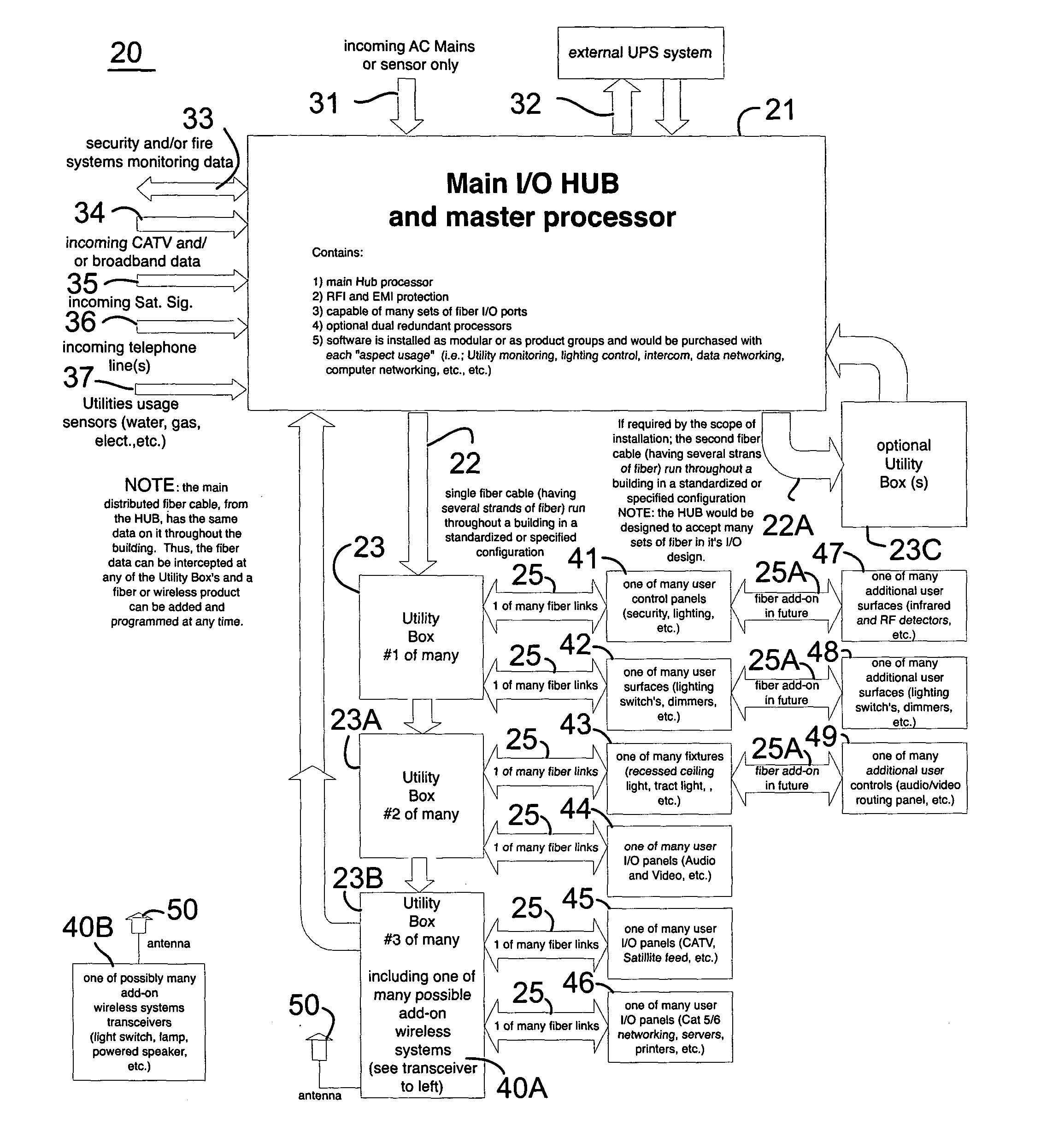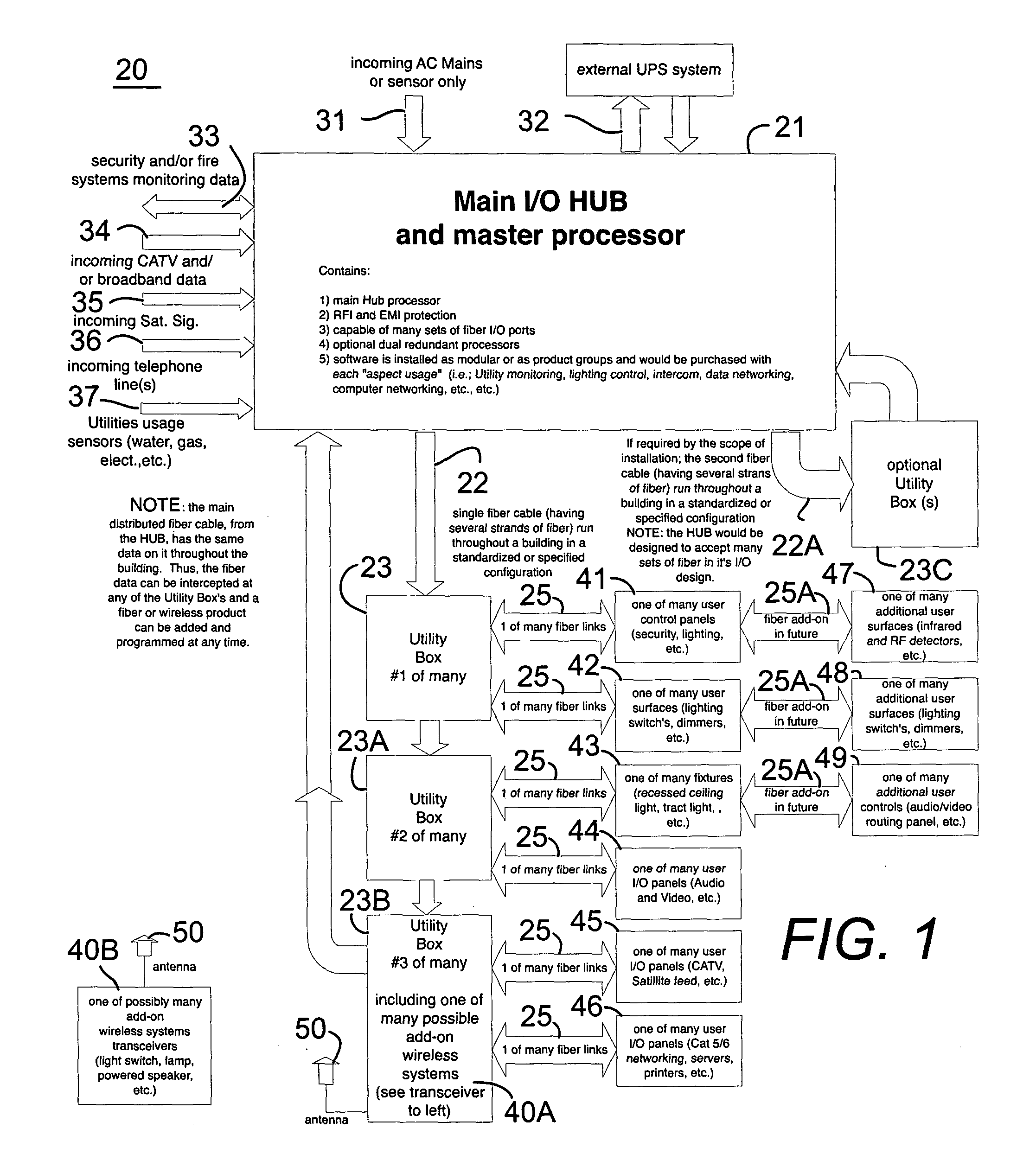Enhanced fiber infrastructure for building interiors
a fiber infrastructure and fiber network technology, applied in the direction of electromagnetic transmission, multiplex communication, electrical apparatus, etc., can solve the problems of insufficient fiber infrastructure topology for residential and commercial needs within buildings, inability to meet the growing needs of such devices, and inability to develop prior art to address the need for interior infrastructure. , to achieve the effect of simple hub programming
- Summary
- Abstract
- Description
- Claims
- Application Information
AI Technical Summary
Benefits of technology
Problems solved by technology
Method used
Image
Examples
Embodiment Construction
[0066] In FIG. 1, an enhanced fiber optic infrastructure system 20 for residential and commercial applications within a building comprises one or more fiber optic cables 22 installed in a building structure that has floors walls and ceilings. The fiber optic cable 22 extends through the building structure positioned in proximity to actual and potential locations of devices 41-49 in the building structure. The devices 41-49 are interactively connected to the fiber optic cable 22 via a fiber cable 25 (as needed) through a utility box (described below). The fiber optic cable 22 comprises a plurality of fibers within the fiber optic cable 22 and carries data on each of the fibers within the fiber optic cable 22, wherein the data could be the same throughout the infrastructure. The fiber optic cable 22 further comprises a fiber splitting means (not shown) and provides access to the data via the fiber splitting means anywhere in the building with hub 21 programming.
[0067] The fiber optic...
PUM
 Login to View More
Login to View More Abstract
Description
Claims
Application Information
 Login to View More
Login to View More - R&D
- Intellectual Property
- Life Sciences
- Materials
- Tech Scout
- Unparalleled Data Quality
- Higher Quality Content
- 60% Fewer Hallucinations
Browse by: Latest US Patents, China's latest patents, Technical Efficacy Thesaurus, Application Domain, Technology Topic, Popular Technical Reports.
© 2025 PatSnap. All rights reserved.Legal|Privacy policy|Modern Slavery Act Transparency Statement|Sitemap|About US| Contact US: help@patsnap.com


